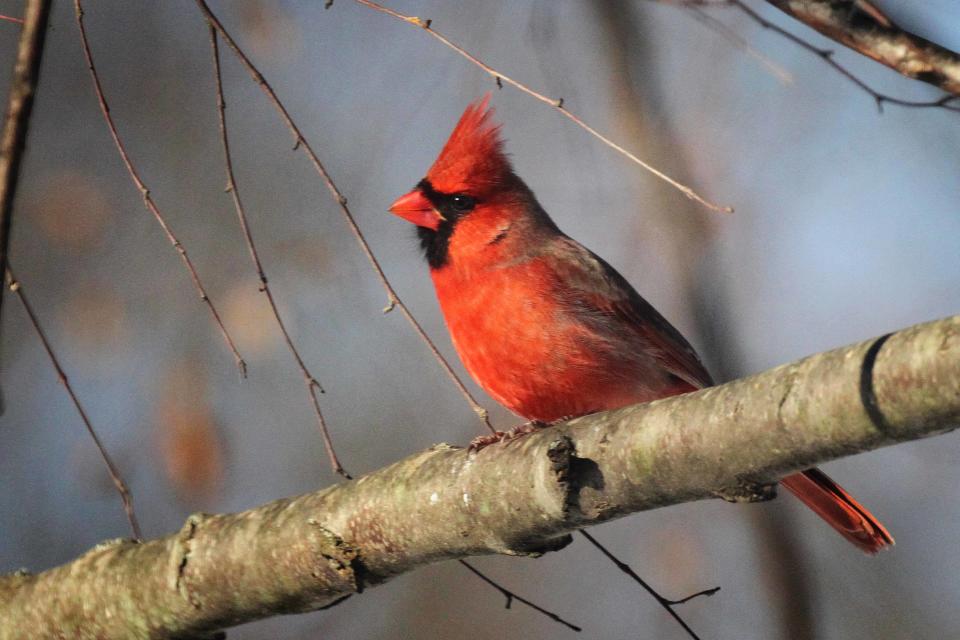The birds we take for granted in the Tri-State are a rarity in other parts of the U.S.
Chickadees, titmice, and cardinals at your feeder? Nothing unusual there, right? Well, maybe not to everyone.
Family and friends often travel some distance for local visits, maybe from distant parts west, south, or east. Even veteran birders from those areas often find some of our most numerous local birds exciting, including certain regular backyard feeder birds.
Woodpeckers, for instance. Our abundant little downy woodpecker brings little squeals of delight when first sighted here by a southern Californian. While the downy can be found across most of the continental U.S., its range stops short of western Texas and parts along the border and into central Nevada.
Likewise, a red-bellied woodpecker brings ooohs and aaaaahs from West Coast visitors since this handsome bird's range ends mid-continent. A pileated woodpecker causes some excitement, too, since it lives and breeds only to mid-continent except along the northern U.S.-Canada border. Of course, many locals thrill to the sight of a pileated, too, since the Woody Woodpecker-like monster is hardly mundane.

But Carolina chickadee and tufted titmouse? Really? They're such regular, common birds at almost every area feeder that few locals show much excitement at their appearance. Not so for our distant visitors.
After all, while the black-capped chickadee wanders across the northern parts of the continent coast to coast, our Carolina chickadee keeps to its more southerly habitats, rarely venturing as far as west Texas or northward of Indiana, Southern Illinois, and the very southern tip of Missouri.
Ditto for the tufted titmouse. While it does hang out year-round northward into Michigan and up almost to New England, it stops well short of the Rocky Mountains. Of course, the black-crested titmouse hangs out in central Texas, the bridled titmouse through central Arizona, the oak titmouse only in California, and the juniper titmouse in its namesake forests primarily in New Mexico, Arizona, Utah, and Nevada. So while West Coast visitors may have seen birds recognizable as members of the titmouse family, they likely have not seen our busy little pink-sided tufted titmouse.
Since our perky Carolina wren inhabits a range roughly overlapping that of the Carolina chickadee, distant visitors may readily recognize the bird as some kind of wren, even without knowing which one. That's because our erect-tailed, year-round songster wren has a general silhouette and behavior similar to those of the 10 other species of wrens living in or migrating to breed in the US.
Visitors are absolutely wowed, however, by the northern cardinal, the male, of course, racking up the most exuberant praise. As common as a cardinal is here, who would guess that this handsome creature isn't a feeder regular all over the continent?
In fact, that's far from the case. An updated range map outlines cardinal habitat stretching from west Texas northward almost (but not quite) to our northern border and eastward to the coast, minus the most northerly parts of New England. So folks from Colorado to Washington to the southern border, get a little bug-eyed spotting these stunning birds. Folks from parts west consider us exceptionally fortunate to have this spectacular bird in our yards on a near-daily basis.
In short, while familiarity may not breed contempt for these feeder regulars, it may cause us to under appreciate the songsters that daily grace our yards. Visitors remind us: Gotta love those lovelies.
For more information about birds and bird habitat, see Sharon Sorenson's books "How Birds Behave," "Birds in the Yard Month by Month," and "Planting Native to Attract Birds to Your Yard." Follow daily bird activity on Facebook at SharonSorensonBirdLady, or email her at chshsoren@gmail.com.
This article originally appeared on Evansville Courier & Press: What birds should I look for in the Evansville, Indiana, area?

